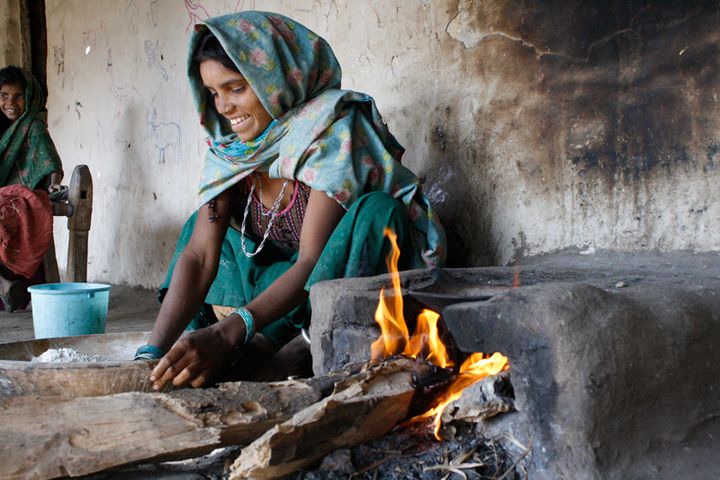Lights On Briefing: India's updated NDC, Pakistan 'climate catastrophe' and more
What you need to know to start the week

Happy Monday and welcome to today’s edition of Lights On, with this week’s key stories on energy and climate change in South Asia.
A reminder that the easiest - and free - way you can support this newsletter's growth is by sharing it with your colleagues and inviting them to subscribe. You can share using the button below or forward this email directly. It takes a minute but it makes a big difference.
India
The new NDC becomes official
Shortly after announcing its new climate targets, India has officially submitted them to the UN registry of the Paris Agreement pledges. In case you missed it, you can read my interview with economist Vibhuti Garg, and here are the main updates:
- “To put forward and further propagate a healthy and sustainable way of living based on traditions and values of conservation and moderation, including through a mass movement for ‘LIFE’– ‘Lifestyle for Environment’ as a key to combating climate change”
- To reduce emissions intensity of India’s GDP by 45 percent by 2030, from 2005 level
- To achieve about 50 percent cumulative electric power installed capacity from non fossil fuel-based energy resources by 2030, with the help of transfer of technology and low-cost international finance including from Green Climate Fund (GCF)
The authoritative research group Climate Action Tracker had labelled India’s previous NDC ‘highly Insufficient’. We are keen to see what the analysts will make of the new targets.
Decarbonising Norway’s pension funds
Norway’s biggest pension fund KLP and development finance institution Norfund have agreed to acquire a 49 percent stake in a 420 MW solar power plant in the arid state of Rajasthan, developed by the Italian energy company ENEL. Through the new Norwegian Climate Investment Fund the two entities are looking to invest Rs 2.8 billion (about $35 million). India is slated to be a priority market for the new climate fund, which will disburse around $1 billion over the next five years.
Climate change hits India’s breadbasket
After this year’s heatwave, with the warmest March in 122 years, farmers in India have recorded a significant drop in wheat harvest, projected to be around 3 percent. Now researchers are urging India’s representatives to raise the issue of food security at the upcoming COP27 meeting, instead of focussing solely on the energy side of climate action.
India’s cotton output cut by erratic weather
While the heatwave impacted food production, erratic weather has affected India’s cotton yields. Earlier this year, the Cotton Association of India had revised its forecast down by 2.3 percent, factoring in heavy rains, flash floods and pest infestations. India is the world’s largest cotton producer, but according to the latest data the entire region has been affected, both in terms of production and processing.
Pakistan
Unprecedented catastrophe
Around 33 million people, mostly in rural areas, have been affected by heavy rains and flooding in Pakistan, a disaster that has claimed more than 1,000 lives. While the climate change minister spoke about ‘climate induced disaster’, observers in the country told Lights On that a lack of governance is ultimately to blame. Karachi-based journalist and editor Farahnaz Zahidi says: “We were expecting these floods, and there is a lot of debate on whether the government is trying to pin this all on climate change, but they could have avoided the humanitarian disaster.” Right now, she adds, “rehabilitation and long term plans are not even being considered, it’s too big of a catastrophe”. But in the long term, the impacts will range from acute food insecurity to severe incidence of water borne diseases, something that “has already started to happen,” Zahidi warns. “Experts say it will take five years to recuperate from this.”
Bhutan
Towards a diverse energy mix
With a new 17.3MW solar tender Bhutan inches towards its goal to implement 300MW of photovoltaic capacity. The country is almost entirely dependent on hydropower for its electricity generation. As climate change alters water availability and the general hydrological stability across the Himalayas, hydropower may not be the safe strategy it once was. The government also recognises the importance of economic and energy diversification, and plans to ramp up its renewable capacity – minus hydro – from the negligible 9MW currently installed.
On Twitter this week
1/ Building Climate Equipped Schools
Groundwater recharging is one of the adaptation measures to ensure water security amidst amplifying floods and droughts.
Schools can be forerunners of climate resilience and collective action.
CSI Noyes School, Madurai pic.twitter.com/3ET3IVb9i1August 27, 2022
Research and further readings
- Documentary: What Happens to a Family “When Glaciers Go” - You won’t hear a mention of climate change in this moving documentary following the lives of a family of farmers in rural Nepal. Instead, environmental changes loom large in the background of busy lives, homes and livelihoods shifting, and hopes for a better future.
- Report: India can add another 23.7GW wind energy capacity in next five years - According to the latest report by the Global Wind Energy Council and MEC Intelligence (MEC), India could add another 23.7 GW of capacity by 2026, “provided necessary enabling policies, facilitative instruments, and the right institutional interventions are put in place”.
- Study: Climate change increases risk of deadly GLOFs across Asia’s highest peaks - A new study in Nature Communications Earth and Environment solidifies the theory that with glacial melt, more and bigger glacier lakes are being formed, increasing the risk of outbursts that can threaten mountain communities and infrastructure.
- Opinion: China’s power crisis could reach a Himalayan scale - A thought-provoking reflection on how climate change is destabilising what had historically been deemed the most reliable and abundant clean energy source, hydropower. In the face of massive drought across Asia, dams everywhere have been grossly underperforming, once again leaving fossil fuels to bridge the demand gap.
- Long read: Bangladesh is being ‘killed by economic conditions elsewhere in the world’ - An exploration of the multifaceted crisis gripping the country, starting from energy prices and spanning the entire economy, with brutal impacts on people’s daily lives: many are now working and living in the dark, as the government is curbing power supply across the country.
Business of the week
JSW Energy - The leading power producer placed the winning bid for a contract worth 500MW/1GWh of battery capacity to be built in Rajasthan. The auction was the first of its kind in India, part of a 2GWh tender issued by the Solar Energy Corporation of India (SECI). The process has attracted a lot of attention in the country as ramping up energy storage is seen as the missing link to achieve India’s energy transition goals.
Results of 1st Battery storage tender is out (prices are quoted on per MW). More details about the bid at https://t.co/qMlHvyoZ84
Huge range in the quoted prices (₹ 1.08-2.29 million), points to massively different capital and operational cost projections!!
Thoughts?? pic.twitter.com/1gyrDBioZ0August 26, 2022
That’s all for today! If you like what you read, please consider sharing this newsletter with a friend or two:



